A forum thread convinced me to buy and install a traditional cat whisker VOR/ILS antenna on the bottom of the fuselage, rather than the hidden wingtip type often seen on these aircraft. I'm happy to give up half a knot for reliable navigation performance.
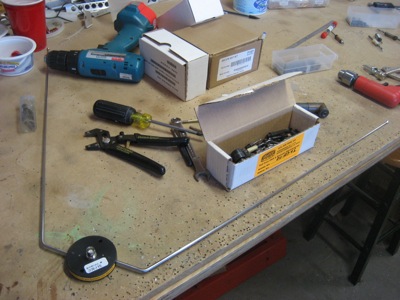
I decided to mount the VOR antenna just aft of the F-710 bulkhead, which is just barely accessible when the empennage is attached. A doubler ties into the bulkhead and the F-779 bottom tail skin.
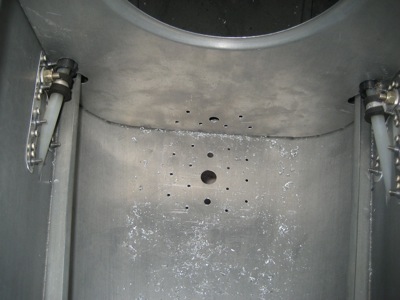
The doubler is made out of 0.063" alclad. Here it's drying after having alodine applied, although in retrospect I'm not exactly sure why I bothered to do this – the "puck" part of the antenna is plastic, and the mounting fasteners don't make electrical contact with anything in there. Oh well, at least it won't corrode.
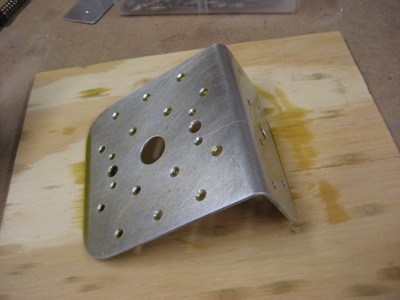
Here it is riveted in place with the antenna attached via nutplates. The brown stain is alodine that ran downhill while it was drying.
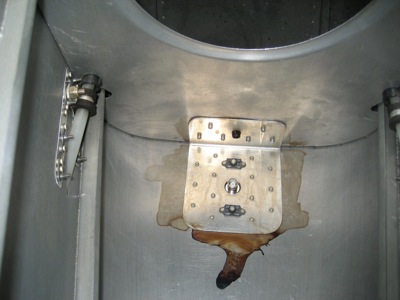
It would be pretty easy to use driven rivets here during the initial build of the tailcone, but on a nearly finished fuselage with the empennage installed it's essentially impossible. Cherry Max rivets to the rescue.
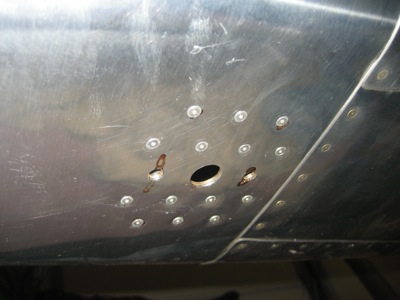
Test-fitting the VOR antenna using some random bolts… when I go to install it for good I'll use AN525 screws instead:
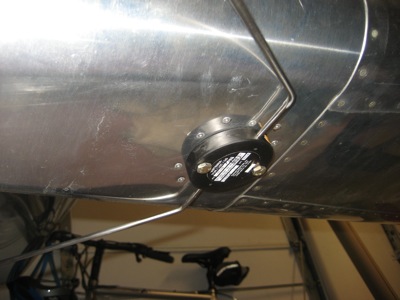
When the rudder and elevators are installed, you won't be able to step on the VOR antenna, so no danger of tripping over it while walking around the back of the airplane.
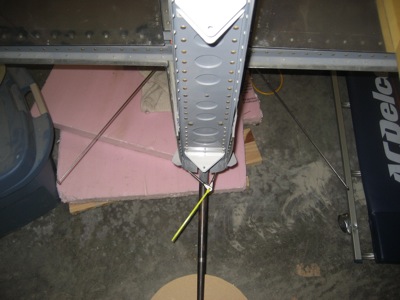
Yeah, it's hanging out in the breeze, but the airflow down there will be pretty disturbed anyway, so it shouldn't cause too much drag (he said, despite having only a journeyman's understanding of aerodynamics). At least the nav radio reception should be pretty good!
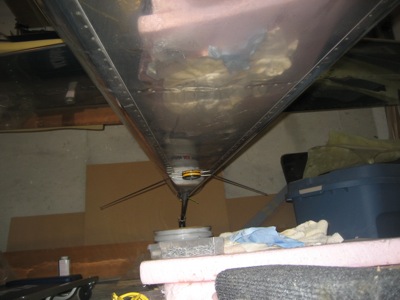
Now that all seven of the antennas on the fuselage are mechanically installed, it's time to move on to wiring them… but that will have to wait for a future work session.